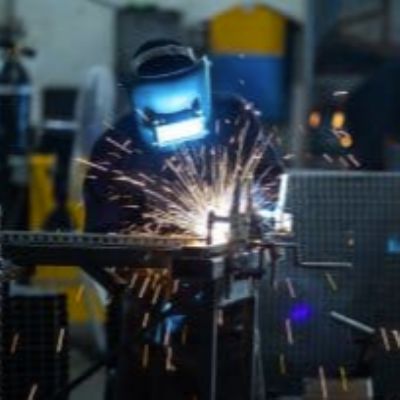Protecting Coated Coils
April 1, 2009Comments
Most manufacturers realize that prepainted metal coils require more care than raw coils, but doing so requires less changes than some may imagine. Painted material is not fragile if properly specified, and typically is stamped and rollformed without protective coverings. These practices outlined by the National Coil Coating Association (NCCA) ensure successful handling of prepainted coil.
The two packaging options are eye to the sky and horizontal eye. Eye-to-the-sky coils are transported on a pallet, so size and weight limitations must be considered. The coil cannot be larger or heavier than the pallet or handling equipment will allow. This type is helpful in preventing damage to coil sidewalls during in-plant transport. Horizontal-eye orientation may be necessary for transporting coils with larger exterior diameter. Measures must be taken to prevent rolling or other unwanted movement and denting.Several methods help prevent movement during shipping. Belly and eye banding may be used individually or together. Belly banding wraps around the outside of the coil and helps prevent it from unraveling. Eye banding uses multiple bands that intersect the exterior and exterior circumference of the coil. Eye banding prevents unraveling and telescoping.
Tape works well for situations where low banding strength is allowed. Steel or aluminum strapping provides maximum strength with simple disposal. Tape offers simple disposal and minimum thickness. Plastic strapping delivers medium strength and is slightly harder to dispose of.
Wrapping coils or using tarps will add further protection. Most plants use a forklift with padding on the forks and mast for in-plant transport. Good handling practices are desirable for best results in processing.
• Storage in weatherproof buildings is preferable; otherwise, keep the material clean and free of condensation.
• Avoid damage to coil edges.
• Handling devices should have padding.
The value of prefinished metal coils makes proper protection important. Various cushioning materials can protect coils while they are moved. Polyurethane is one of the most effective materials, but felt as well as previously used conveyor belting also work well. To protect coils stored in inventory, use floor pads made of polyurethane or an equivalent cushioning material. Protective films may be applied at slitting or sheeting if required.
Coils often are lifted from turnstiles with a V-shaped coil car. The surface of that coil car should be made of a nonmetallic material. Turnstiles with modular round supports made of hardened steel for coil support help reduce damage.
To prevent damage during handling: do not sit coils on band-securing clips; try to limit the number of bands used, as each band increases the risk of denting; stocked coils should remain banded until processed; be careful when removing bands to prevent snapback of the coil; and keep the clips off of the coil surface.
National Coil Coating Association: 216/241-7333; www.coilcoatinginstitute.org
See also: National Coil Coating Association
Technologies: Finishing, Pressroom Automation
Comments
Must be logged in to post a comment. Sign in or Create an Account
There are no comments posted. Finishing
FinishingWeldable Rust Inhibitor
Thursday, October 20, 2022







